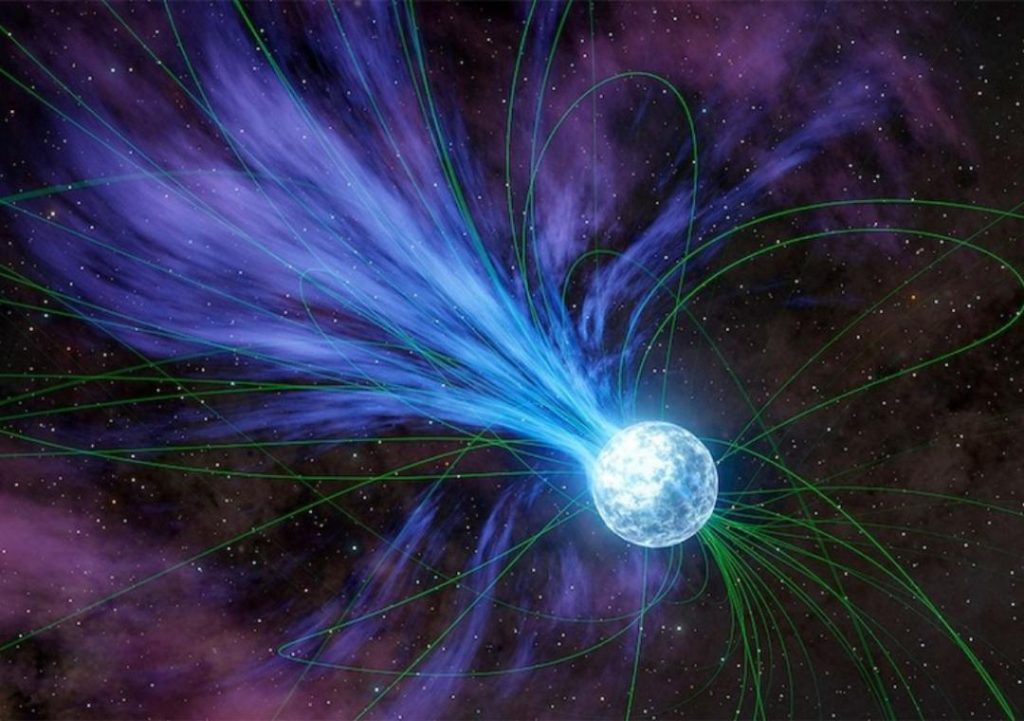
Gold & Platinum Created through Neutron Stars’ Explosions: Study
For centuries, humans have been fascinated by the origins of precious metals like gold and platinum. While we’ve long known that these elements are formed through natural processes, the exact mechanisms behind their creation have remained shrouded in mystery. However, a recent study has shed new light on the origins of these valuable metals, and the answer lies in the explosive power of neutron stars.
A team of researchers led by Columbia University student Anirudh Patel has made a groundbreaking discovery that suggests magnetars, or highly magnetized neutron stars, played a crucial role in creating elements like gold and platinum in a cosmic event over 20 years ago. According to the study, these magnetars exploded and released flares that contained these precious metals.
Neutron stars are incredibly dense objects that are formed when massive stars collapse under their own gravity. They are so dense that a sugar-cube-sized amount of their material would have a mass of about a billion tons. Magnetars, on the other hand, are a type of neutron star that is characterized by its extremely strong magnetic field.
The study, which was published in the journal Nature Astronomy, analyzed data from the Chandra X-ray Observatory, which is operated by NASA. The researchers used this data to study the properties of a magnetar that exploded in 1998, sending a flare of energy into space. By analyzing the properties of this flare, the team was able to determine that it contained high levels of gold and platinum.
But how did these precious metals end up in a neutron star’s flare? The answer lies in the intense heat and energy released during the explosion. When a magnetar explodes, it releases an enormous amount of energy in the form of X-rays and gamma rays. This energy is so intense that it can cause the atoms in the surrounding material to be stripped of their electrons, creating a plasma of charged particles.
As this plasma cools, the particles begin to recombine, forming new atoms and molecules. According to the study, the conditions in the flare were perfect for the creation of gold and platinum, which are two of the heaviest elements on the periodic table. These elements are formed when atomic nuclei combine through a process known as rapid neutron capture, or r-process nucleosynthesis.
The r-process is a crucial process in the formation of heavy elements, and it’s thought to occur in extreme astrophysical environments, such as neutron star mergers and supernovae explosions. However, the study suggests that magnetars may also be capable of producing these elements through their explosive power.
But what’s the significance of this discovery? For one, it provides new insights into the origins of precious metals like gold and platinum. For centuries, humans have been fascinated by these elements, and their exact origins have been a topic of debate. Now, we know that they were created in the heart of a neutron star, through a process that’s both violent and beautiful.
The study also highlights the importance of magnetars in the cosmos. These objects are incredibly powerful, and their explosions can have a significant impact on the surrounding environment. By studying these events, scientists can gain a better understanding of the extreme physics that govern the behavior of these objects.
So, the next time you look at a gold ring or a platinum necklace, remember that these precious metals were created in the heart of a neutron star, through a process that’s as violent as it is beautiful. The discovery of gold and platinum in a magnetar’s flare is a reminder of the awe-inspiring power of the universe, and the incredible mysteries that still await us.






